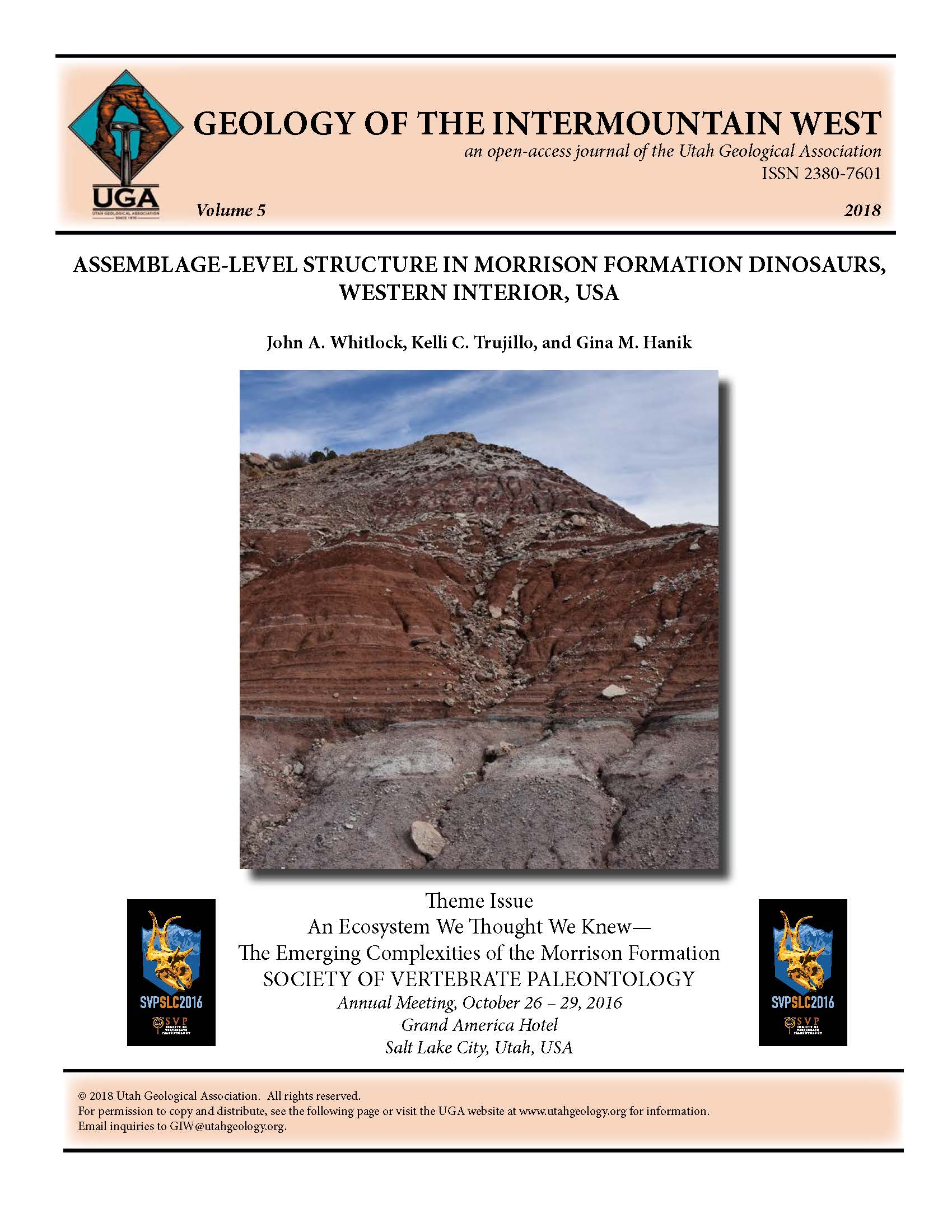Assemblage-level structure in Morrison Formation dinosaurs, Western Interior, USA
Abstract
The Upper Jurassic Morrison Formation is both geographically extensive and well-sampled, making it an ideal candidate for biogeographic analysis at both coarse and finer scales. Historically, however, this has not translated into a consensus on patterns of ecological structure and connectivity, particularly with regard to the characteristic dinosaur faunas. Here, we use both traditional (genus richness, alpha and beta diversity) and bipartite network-based (biogeographic connectivity, local endemism, and average occurrence) measures to examine patterns of structure on a per-locality basis. Given the broad geographic range of the formation, we subdivide the Morrison Formation into four discrete regions based roughly on latitude and lithology—north (Montana, South Dakota, and northern Wyoming), west (Utah and western Colorado), east (central and eastern Colorado and southern Wyoming), and south (Arizona, New Mexico and Oklahoma). Further investigation revealed many coeval sites (ca. 152 Ma) in the east and west regions. Presence-absence data were also compared using network analysis to determine the presence and content of discrete subassemblages within the larger region-level assemblages. Based on our results, we favor reconstructions of the Morrison Formation as a ‘mosaic’ type environment over most of its depositional history, with patches of open environments interspersed with more closed, forested regions. is is suggested by relatively low rates of local endemism (patches are consistent in plant and animal structure) and connectivity across the majority of the formation, as well as the recovery of three non-overlapping assemblages dominated by dierent guilds of herbivorous dinosaurs.

Copyright (c) 2018 Utah Geological Association

This work is licensed under a Creative Commons Attribution 4.0 International License.




